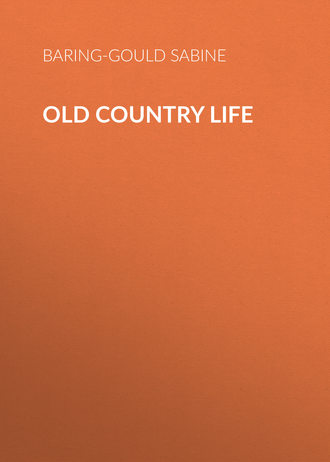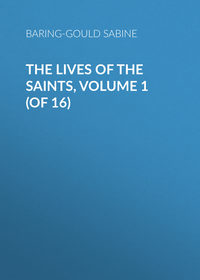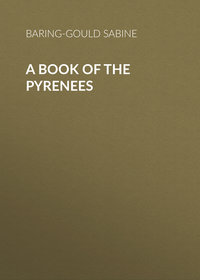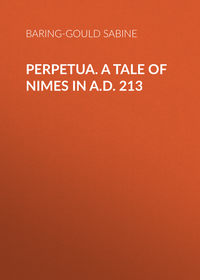 полная версия
полная версияOld Country Life
The calendar was produced – there was no moon. The evidence against the accused broke down, and he was acquitted.
This was considered at the time a clever move of Mr. Dunning; it occurred to no one that it was immoral. Captain St. Pierre had to pay Dunning heavily; in fact, he made over to him a portion of the estate in lieu of paying in cash, and later, when he became further involved, he sold the property to the Barings. Dunning was created Baron Ashburton, but the title became extinct with his son, who bequeathed his property to Alexander Baring, his first cousin, who was elevated to the peerage under the title of Baron Ashburton, and the St. Pierre property now belongs to Lord Ashburton.
Captain Edward St. Pierre died in 1788, without issue, and his sister became his heir; but he had got rid of everything he could get rid of. Only the estate near the Tamar had been saved from sale by his mother taking it of him on a lease for ninety-nine years. She was residing on it when the news reached her that her good-for-nothing son was dead.
He had died at Shaldon, near Teignmouth, on the 29th June, and his last request was that he might be carried to Bath, and laid by the side of the woman he had wronged.
When his mother received the tidings of his death she was in uncertainty what to do. All the last night of June to the dawn of July 1, she sat in one tall-backed arm-chair, musing what to do with the rest of her life. Should she go to Bath, and spend the remainder of her days at cards, amusing herself? or should she devote it to a country life, and to repairing the shattered fortunes of the family?
When morning broke her mind was made up. She would adopt the nobler, the better cause; and she carried it out to the end. As each farm fell vacant in the parish she took it into her own hands, and farmed it herself, and succeeded so well, that when the rival gentle family in the parish, owning a handsome barton there, fell into difficulties, she bought their estate, so as to make some amends for the loss of the Ashburton property. That the chair in which the old lady sat meets with respect ça va sans dire.
CHAPTER III
COUNTRY HOUSES
WHAT a feature in English scenery is the old country house! Compare the seat that has been occupied for many generations with the new mansion. The former with its embowering trees, its lawns and ancient oaks, its avenues of beech, the lofty, flaky Scotch pines in which the rooks build, and about which they wheel and caw; and the latter with new plantations, the evidence everywhere present of hedges pulled down, manifest in the trees propped up on hunches of clay.
There is nothing so striking to the eye on a return to England from the Continent as the stateliness of our trees. I do not know of any trees in Europe to compare with ours. It is only with us that they are allowed to grow to advanced age, and die by inches; only with us are they given elbow-room to expand into the full plenitude of their growth. On the Continent every tree is known to the police, when it was planted, when it attains its maximum of growth; and then, down it comes.
Horace Walpole had no love of the country – indeed, he hated it, and regarded the months that he spent in Norfolk as intolerable. He laments in a letter to Sir Horace Mann (Oct. 3rd, 1743), that the country houses of the nobility and gentry of England are scattered about in the country, and are not moved up to town, where they would make streets of palaces, like those of the great people of Florence, and Genoa, and Bologna. "Think what London would be if the chief houses were in it, as in the cities of other countries, and not dispersed, like great rarity-plums in a vast pudding of country."
It is precisely because our most noble mansions are in the country, in a setting of their own, absolutely incomparable, of park and grove, that they are unsurpassed for loveliness anywhere. Framed in by pines and deciduous trees, copper beech and silver poplar, with shrubberies of azalea in every range of colour, from scarlet, through yellow to white, and rhododendrons full of bloom from early spring to midsummer, and double cherry, almond, medlar. Why, the very framing makes an ugly country house look sweet and homelike.
But beautiful as are the parks and grounds about our gentlemen's houses, they are but a remnant of what once was. We see in our old churches, in our mansions, that oak grew in profusion in England at one time, and reached sizes we cannot equal now. Great havoc was wrought with the woods and parks in the time of the Commonwealth and at the Restoration. The finest trees were cut down that ships might be built of them for the royal navy; the commissioners marked and took what trees they would. Thus in 1664 Pepys had to select trees in Clarendon Park, near Salisbury, which the Chancellor had bought of the Duke of Albemarle. Very angry the Chancellor was at having his park despoiled of his best timber, and Pepys gives us in his Diary an amusing account of his trouble thereupon.
But to come to the houses themselves. Is there anything more sweet, peaceful, comfortable than the aspect of an old country house, of brick especially, with brown tiled roof and clustering chimneys backed by woods, with pleasure gardens at its side, and open lawn and park before it? No, its equal is to be found nowhere. The French château, the Italian palace, the German schloss are not to be spoken of in the same breath. Each has its charm, but there is a coldness and stiffness in the first, a turned-inwardness in the second, and a nakedness in the last that prevent us from associating with them the ideas of comfort and peace.
The true English country house is a product of comparatively late times, that is to say, from the reign of Henry VIII. onwards. Before that, the great nobles lived in castles, and the smaller gentry in houses of no great comfort and grandeur.
In the parish of Little Hempston, near Totnes, is a perfect mansion of the fourteenth century, probably the original manor-house of the Arundels, but given to the Church, when it became a parsonage. It is now used as a farm, and a very uncomfortable farm-house it makes. As one of the best preserved houses of that period I know, it deserves a few words.
This house consists of three courts; one is a mere garden court, through which access was had to the main entrance; through this passed the way into the principal quadrangle. The third court was for stables and cattle-sheds. Now this house has but a single window in it looking outwards, and that is the great hall window, all the rest look inwards into the tiny quadrangle, which is almost like a well, never illumined by the sun, so small is it.
The hall had in it a brazier in the midst, which could never heat it, though the numbed fingers might be thawed at it. Adjoining the hall is the ladies' bower, a sitting-room dark as a vault, with indeed a fireplace in it. These were the sole rooms that were occupied by day, the hall and the bower.
The Arundels had another place at Ebbfleet, near Stratton, which was no bigger, and only a little less gloomy; the windows were always made, for protection, to look into a court. It was not till after the Wars of the Roses that there was more light allowed into the chambers.
I give a sketch and plan of a manor-house still almost unaltered, called Willsworthy, in the parish of Peter Tavy in Devon. It is built entirely of granite. It has near it a ruined chapel, but what family occupied it and when I do not know; it has not certainly been tenanted by gentlefolks since the reign of Henry VIII.
It was not till the Tudor period that the houses of our forefathers became comfortable and cheerful.
We should be wrong, however, if we supposed that in the Elizabethan period the windows were designed so much for looking out at as for letting the sun look in at. The old idea of a quadrangle was not discarded, but it was modified. The quadrangle became a pleasant garden within walls; the destruction of the walls to afford vistas was the work of a later age.
The normal plan of a house till the reign of Elizabeth was the quadrangle; but then, in the more modest mansions, the house itself did not occupy more than a single side of the court, all the rest was taken up with barns and stables, and the windows of the house looked into this great stable-yard. On the side of Coxtor, above Tavistock, stands an interesting old yeoman's house, built of solid granite, which has remained in the possession of the same worthy family for many generations, and has remained unaltered. This house, in little, shows us the disposition of the old squire's mansion, for the yeoman copied the plan of the house of the lord of the manor. A granite doorway gives admission to the court, surrounded on all sides but the north by stabling. On the north side, raised above the yard by a flight of steps, is a small terrace laid out in flower-beds; into this court all the windows of the house look. We enter the porch, and find ourselves in the hall, with its great fireplace, its large south window, where sits the mistress at her needlework, as of old; and here is the high table, the wall panelled and carved, where sit the yeoman and his family at meals, whilst the labourers sit below. This very simple yet interesting house is quite a fortress; it is walled up against the stormy gales that sweep the moor. It is a prison too, for it catches and holds captive the sunbeams that fall into the bright little court.
We are too ready to regard our forefathers as fools, but they knew a thing or two; they were well aware that in England, if we want flowers to blow early and freely, they must be sheltered.
It was not till the reign of Charles II. that the fancy came on English people to do away with nooks and corners, and to build oblong blocks of houses without projections anywhere.
The new Italian, or French château style, had its advantages, but its counterbalancing disadvantages. The main advantage was that the rooms were loftier than before; the walls, white and gold, were more cheerful at night; there may have been other advantages, but these are the only two that are conspicuous. The disadvantages were many. In the first place, no shelter was provided out of doors from the wind; no pleasant nooks, no sun-traps. The block of building, naked and alone, stood in the midst of a park, and the wind whistled round it, and the rain drove against it. When the visitor arrived in bad weather, he was blown in at the door, and nearly blown through the hall. In our eagerness to make vistas, obtain extensive landscapes, we have levelled our enclosing walls. But what could have been a sweeter prospect from a hall or parlour window, than an enclosed garden full of flowers, with bees humming, butterflies flitting, and fruit-trees ripening their burdens against old red brick enclosing walls, tinted gorgeously with lichens?
There is at present a fashion for being blown about by the wind, so we unmuffle our mansions of their enclosing walls and hedges. But England is a land of wind. Nothing strikes an Englishman more, when living abroad, than the general stillness of the air. Look at the wonderful bulbous spires and cupolas to towers on the Continent; – marvellously picturesque they are. If examined, they are found to be very generally covered with the most delicate slate work, that folds in and out of the crinks and crannies, like chain mail. Such slating would not endure three winters in England; it would be torn adrift and scattered like autumn leaves before an equinoctial gale. We never had these bulbous spires in England, because the climate would not permit of their construction. Our forefathers knew that this was a windy world of ours —
"Sing heigh ho for the wind and the rain,For the rain it raineth every day,"and they built their houses accordingly – to provide the greatest possible amount of shelter from the cold blasts of March, and from the driving rains of winter. The house originally consisted on the ground-floor of hall, parlour, kitchen, and entrance-porch and stairs. In later times the side wing was carried further back, and a second parlour was built, and the staircase erected between the parlours.
At Upcott, in Broadwood, in Devon, is a house that belonged to the Upcotts. The plan is much the same as that of Willsworthy, even ruder, though the house itself was finer. It had a porch, a hall, and a dairy and kitchen. The parlour is of Queen Anne's reign, and probably takes the place of one earlier on the same spot. The plan of Hurlditch is the same, a mansion of the important family of Speccot. There also the parlour is comparatively recent.
There was in a house previous to the reign of Henry VII. but one good room, and that was the hall. It opened to the roof, and must have been cold enough in winter, and draughty at all times.
At Wortham, the fine mansion of the Dynhams, there was an arrangement, as far as I know, unique – two halls, one for winter with a fire-place in it, serving as a sort of lower story to the summer-hall, clear to the roof – thus one is superposed on the other.
Tonacombe, a mansion of the Leys and Kempthornes in Morwenstowe parish in Cornwall, is a singularly untouched house of a somewhat similar construction, but enlarged. Here there was the tiny entrance-court into which the hall looked; the hall itself being open to the roof, with its great fire-place, and the parlour panelled with oak. All other reception-rooms are later additions or alterations of offices into parlours.
With the reign of the Tudors a great sense of security and an increase of wealth must have come to the country gentry, for they everywhere began to rebuild their houses, to give them more air and light, and completely shook off that fear which had possessed them previously of looking out into the world. Then came in an age of great windows. It would seem as though in the rebound they thought they could not have light enough. Certainly glass must have been inexpensive in those days. It was the same in the churches; the huge perpendicular windows converted the sacred edifices into lanterns. The old halls open to the roof gave way to ceiled halls, and the newel staircase in the wall – very inconvenient, impossible for the carrying up or down-stairs of large furniture – was discarded for the broad and stately staircase of oak.
It seems to me that the loss of shelter that ensued on the abandonment of the quadrangle, or of the E-shaped Elizabethan house, is not counterbalanced by the compactness of the square or the oblong block of the Queen Anne house. Moreover, the advantages internally were not so great as might be supposed, for, to light the very lofty room the windows were made narrow and tall; thus shaped they admitted far less sun than when they were broad and not tall.
Only one who, like myself, has the happiness to occupy a room with a six-light window, twelve feet wide and five feet high, through which the sun pours in and floods the whole room, whilst without the keen March wind is cutting, cold and cruel, can appreciate the blessedness of such a window, can tell the exhilarating effect it has on the spirits, how it lets the sun in, not only through the room, and on to one's book or paper, but into the very heart and soul as well.
A long upright narrow window does not answer the purpose for which it was constructed. The light enters the room from the sky, not from the earth, therefore only through the upper portion of a window. The wide window gives us the greatest possible amount of light. If we were but to revert to the Elizabethan window, we would find a singular improvement in our health and spirits.
Our old country houses were, say modern masons, shockingly badly built. "Why, sir," said one to me, "do look here at this wall. It is three foot six thick – what waste of room! – and then only the facing is with mortar between the stones, all the rest of the stones are set in clay." I was engaged building my porch when the man said this. So I, convinced by his superior experience, apologized for my forbears, and bade him rebuild with mortar throughout. What was the result? That wall has been to me ever since a worry. The rain beats through it; every course of mortar serves as an aqueduct, and the driving rain against that wall traverses it as easily as if it were a sponge. Our old houses were dry within – dry as snuff. Now we cannot keep the wet out without cementing them externally. Those fools, our forefathers, by breaking the connexion prevented the water from penetrating.
Do any of my readers know the cosiness of an oak-panelled or of a tapestried room? There is nothing comparable to it for warmth. What the reader certainly does know is, that from a papered wall and from a plate-glass window there is ever a cold current of air setting inwards. He supposes that there is a draught creeping round the walls from the door, or that the window-frame does not fit; and he plugs, but cannot exclude the cold air. But the origin of the draught is in the room itself, and it is created by the fire. The wall is cold and the plate-glass is cold, and the heated atmosphere of the room is lowered in temperature against these cold surfaces, and returns in the direction of the fire as a chill draught. But when the room is lined with oak or with woven woollen tapestry, then the walls are warm, and they give back none of these chill recoil currents. The fire has not the double obligation laid on it of heating the air of the apartment and the walls.
In Germany and Russia during the winter double windows are set up in every room, and by this means a film of warm air is interposed between the heated atmosphere of the room and the external cold air. That our ancestors did not attempt, – plate-glass was not known to them, – but they did what they could in the right direction. They covered the chill stone and plaster walls of the rooms with non-conducting materials.
The oak-panelled room was, it can hardly be denied, difficult to light at night, as the dark walls absorbed the candle rays. But that mattered little at a time when every one went to bed with the sun. When later hours were kept, then the oak panels were painted white. But now that we have mineral oils, not to mention gas and electric lighting, we may well scrape off the white paint and restore the dark oak. Then, for an evening, the sombre background has quite a marvellous effect in setting off the bright ladies' dresses, and showing off fresh pretty faces.
Before the reign of Elizabeth the staircase was not an important feature in the house. The hall reached to the roof, and the stairs were winding flights of stone steps in turrets, or in the thickness of the wall; when the fashion set in to ceil the halls low, then the staircase became a stately feature of the house. But it was more than a stately feature, it was the great ventilating shaft of the house; it was to the house what the tower is to the church, the chimney by which the stale fumes might pass away. The great staircase window, made up of thousands of little pieces of glass set in lead, acted as a colander through which the outer air streamed in and the inner vitiated air escaped. Where there is a central quadrangle, this was in many cases glazed in; then a staircase led to a series of galleries about it, lighted from above, communicating with the several suites of apartments. Many of our old inns are thus constructed. The reader will remember the picture of the court of the White Hart in Pickwick, with the first introduction of Sam Weller. The central court serves as a ventilator to the house, and so does its dwindled representative, the well-staircase. Those fools, our forefathers, again, if they shut out the winds and gave shelter to their houses, made ample provision for internal ventilation.
What a degraded, miserable feature of the house is the staircase now-a-days, with its steps seven inches instead of four, and the tread nine and a half inches instead of thirteen. It takes an effort to go up-stairs now, it is a scramble; it was an easy, a leisurely, and a dignified ascent formerly. Then again, our staircases are narrow – one of four feet is of quite a respectable width; but the old Elizabethan staircase measured from six feet to eight feet wide. That of Blickling Hall, Norfolk is seven feet eight inches. There the ascent is single to the first landing; after that the stair branches off, one for the ascent, the other for the descent. The first ascent is of eight steps; then after the main landing, on each side eleven steps to the second landing; then nine more lead to the level of the upper storys and grand corridor. On such staircases as these furniture can be conveyed up and down without damage to the walls, or injury to the furniture. Architects who build modern narrow and steep staircases, forget that often a coffin has to be conveyed with its tenant down them; and this can be done neither with convenience nor dignity upon them.
But let us think of the staircase on a brighter occasion than a funeral. The grand old flight of steps with its landings, and with sometimes its bay-window with seats in it on one of the landings, how it lends itself to the exigencies of a sitting-out place at a ball. The window is filled with azaleas; the walls hung with full-length family portraits; the broad dark oak stairs are carpeted with crimson; a chandelier pendant from the moulded Elizabethan ceiling-drop sheds a soft golden light over the scene; and on the landings, on the steps themselves, sit the dancers after the exertions of a waltz or a galop, enjoying the fresher air, and forming a picture of almost ideal charm. Then also it is that the ventilating advantages of the great staircase become most manifest. The dancing has been in the hall, which has become hot; the door on to the stairs is thrown open; there is a circulation of air at once, and in two minutes the atmosphere of the ball-room has renewed itself.
In the matter of sleeping arrangements we have certainly made an advance on those of our ancestors. I have already mentioned Upcott, which belonged to a family of that name that expired in the reign of Henry VII. The hall is small, but has a huge fire-place in it. In the window is a coat of arms, in stained glass, representing Upcott impaling an unknown coat, party per pale, argent and sable, three dexter hands couped at the wrist, counterchanged. Now this house has or had but a single bedroom. There may have been, and there probably was, a separate apartment for the squire and his wife, over the parlour, which was rebuilt later; but for all the rest of the household there existed but one large dormitory over the hall, in which slept the unmarried ladies of the family, and the maid-servants, and where was the nursery for the babies. All the men of the family, gentle and serving, slept in the hall about the fire on the straw, and fern, and broom that littered the pavement.
That house is a very astonishing one to me, for it reveals a state of affairs singularly rude – at a comparatively late period. Things were improved in this particular later; bedrooms many were constructed, communicating with each other. At the head of the stairs slept the squire and his wife, and all the rooms tenanted by the rest of the household were accessible only through that. The females, daughters of the house and maid-servants, lay in rooms on one side, say the right, the maids in those most distant, reached through the apartments of the young ladies; those of the men lay on the left, the sons of the house nearest the chamber of the squire, the serving-men furthest off.
When the party in the house retired for the night, a file of damsels marched up-stairs, domestic servants first, passed through the room of their master and mistress, then through those of the young ladies, and were shut in at the end; next entered the daughters of the house to their several chambers, the youngest lying near the room of the serving-maids, the eldest most outside, near that of her father and mother. That procession disposed of, a second mounted the stairs, consisting of the men of the house, the stable-boy first, and the son and heir last, and were disposed of similarly to the females, but on the opposite side of the staircase. Then, finally, the squire and his wife retired to roost in the chamber that commanded those of all the rest of the household. This arrangement still subsists in our old fashioned farm-houses.
Now may be understood the odd provision in a will proved in the Consistory Court of Canterbury in 1652 (Bowyer, f. 57) – "I give to my son Thomas the sole fee-simple and inheritance of my dwelling-house, and all my lands and hereditaments thereto belonging, to him and to his heirs for ever. And my will is, that Joan my daughter shall have free ingress, egress, and regress to the bedd in the chambre where she now lieth, so long as she continueth unmarried."











